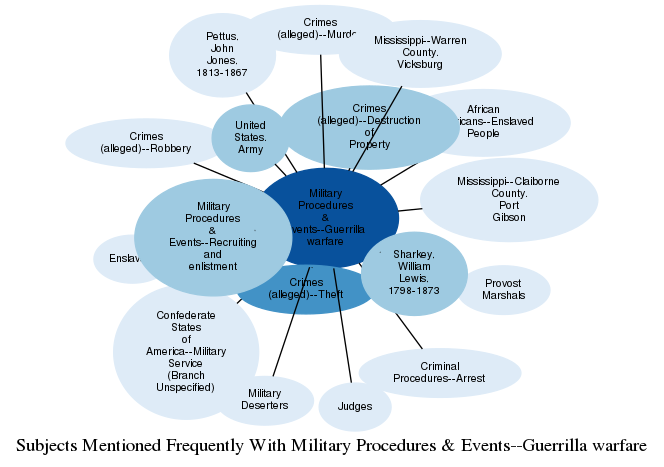Description
Guerrilla warfare is a "type of warfare fought by irregulars in fast-moving, small-scale actions against orthodox military and police forces and, on occasion, against rival insurgent forces, either independently or in conjunction with a larger political-military strategy" (Britannica).
In the American Civil War, both the United States and Confederate armies turned to guerrilla warfare at different points. The Confederacy saw the greatest prevalence of irregular fighting, as many Southerners resisted the earliest instances of invasion by fighting at the local level. While some Southerners viewed guerrilla warfare as an honorable tradition stretching back to the American Revolution, many others, including Confederate leaders like Jefferson Davis, preferred the formal, Napoleonic style of warfare and saw guerrillas (also called "partisans" or "bushwhackers") as uncivilized. However, the Confederate war effort relied more heavily on guerrilla forces as conventional warfare failed to overcome the Union. Guerrillas protected local communities, stifled Union movements, distracted Union generals from primary objectives and produced changes in strategy, and dampened Union morale.
The Confederacy's failure to meaningfully recognize or integrate these forces into their grand strategy ultimately backfired. Confederate guerrillas became increasingly ungovernable, leading to widespread lawlessness among guerillas. Some partisan forces, composed of draft dodgers and deserters, suffered disaffection with the Confederate war effort late in the war and hindered the Confederacy as much as the Union. The inability to control guerrillas sometimes led to their devastating the communities they formerly protected.
Unionists throughout the South often formed their own guerrilla forces to counter both the Confederate Army and Confederate-sympathizing insurgents, leading to extremely violent clashes between local partisan companies that frequently lost sight of either national war effort. Guerrilla resistance arose most often in areas of invasion by hostile forces and thereby saw the greatest intensity in border states before trickling further south throughout the war. Irregular resistance among Unionists conversely rose in proportion to the close proximity of the Union Army. While both sides enlisted guerrilla forces into their formal armies, often calling them "partisan rangers," most guerrilla fighting remained disorganized and chaotic, though its impact on the war's outcome was immense. (Essential Civil War Curriculum)
See also: https://www.essentialcivilwarcurriculum.com/partisans-and-guerrillas.html
Related Subjects

The graph displays the other subjects mentioned on the same pages as the subject "Military Procedures & Events--Guerrilla warfare". If the same subject occurs on a page with "Military Procedures & Events--Guerrilla warfare" more than once, it appears closer to "Military Procedures & Events--Guerrilla warfare" on the graph, and is colored in a darker shade. The closer a subject is to the center, the more "related" the subjects are.